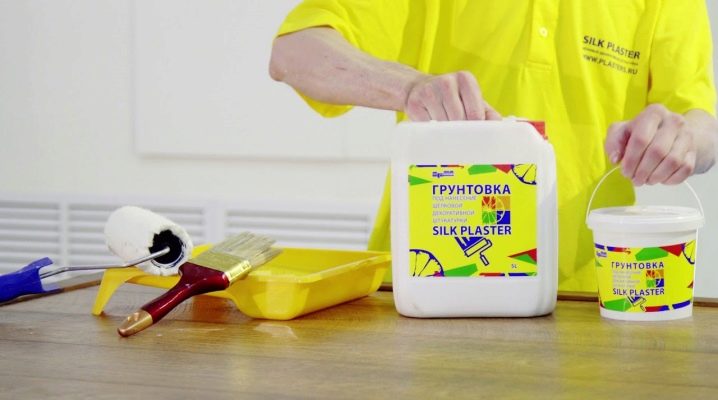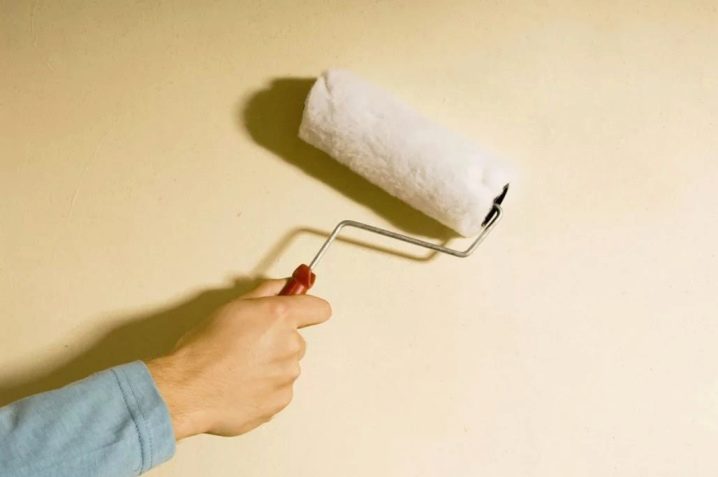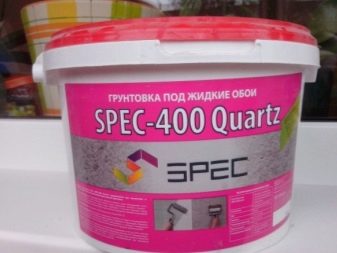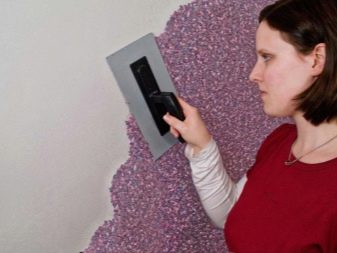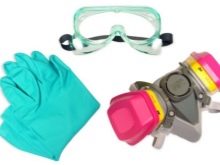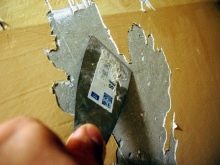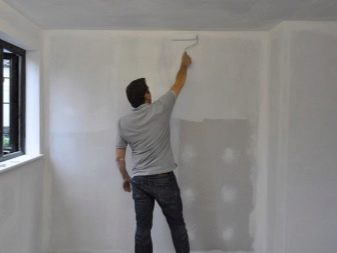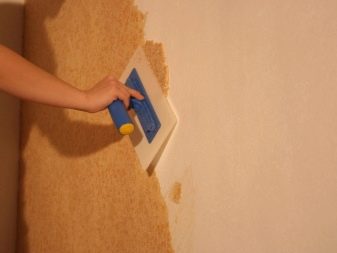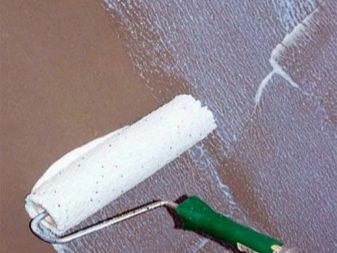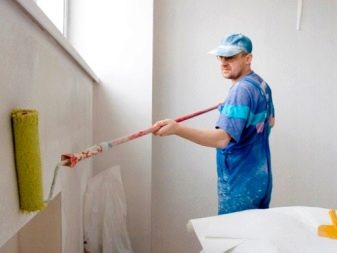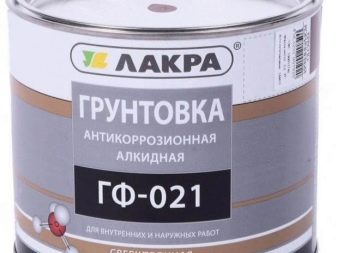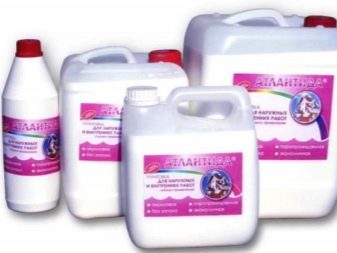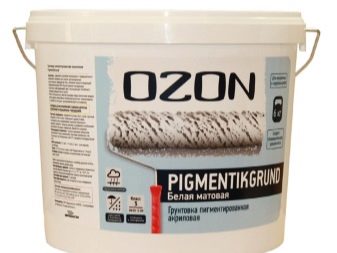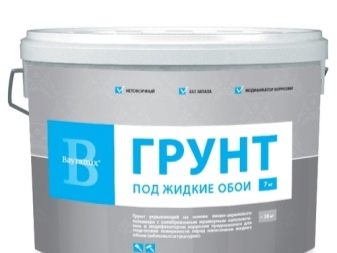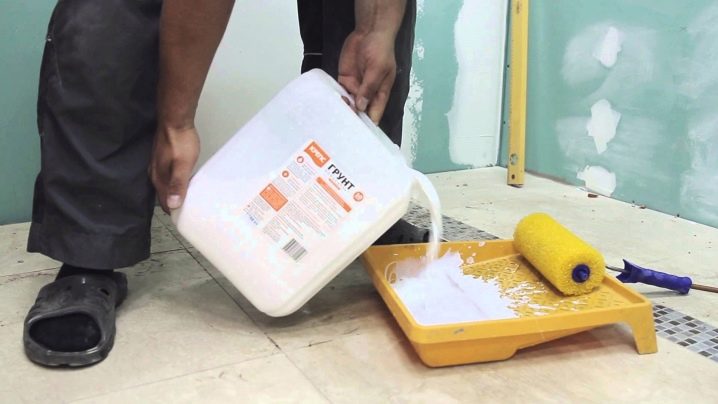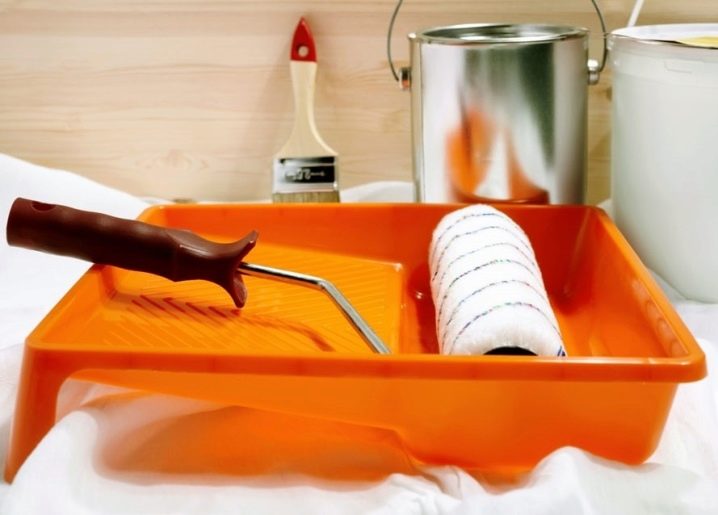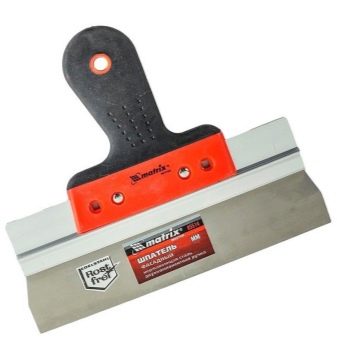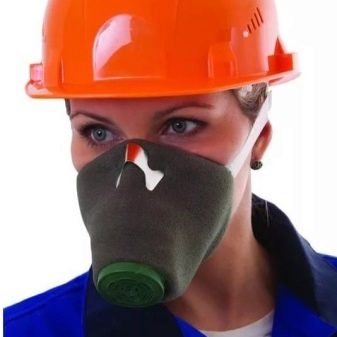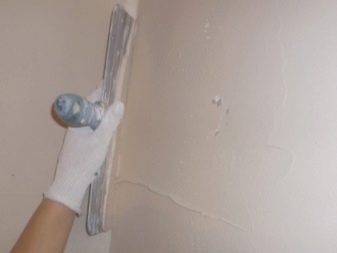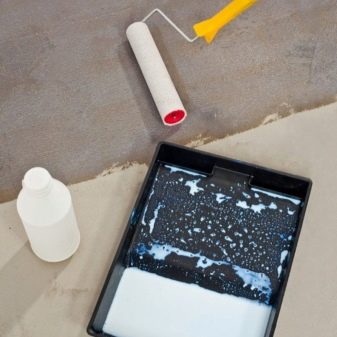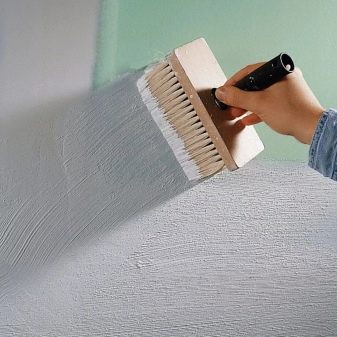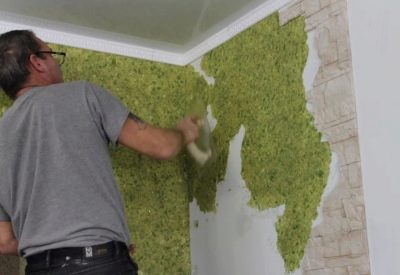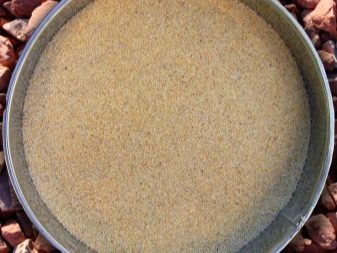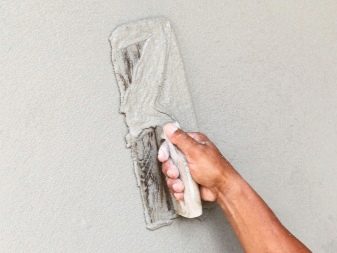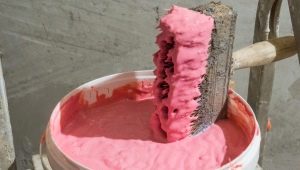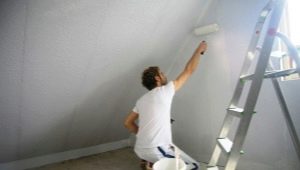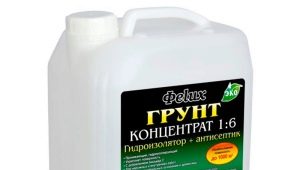Primer for liquid wallpaper: why you need and features of choice
Surface treatment (walls, ceilings) with priming solution during repairs is an important process. It is of great importance at the preparatory stage, differs in a number of useful properties. Priming the walls before applying the liquid wallpaper ensures the strengthening of the treated surface, due to the deep penetration makes the base uniform, gives it adhesion qualities.
Relevance
This composition is a preparatory component before applying a special type of wallpaper on the walls or ceiling. Liquid wallpaper resembles decorative plaster, but they do not contain quartzite. This material is smeared on the surface. However, without pre-priming it is difficult to expect a quality result and durable operation.
The primer has long established itself with the best hand,as a component of quality finishing work, but if you do not comply with the requirements for the preparation of the base, the composition will not provide maximum adhesion.
Training
The builder must wear a uniform, glasses, gloves to protect himself from falling into the solution. Initially, it is necessary to inspect the wall or ceiling for the presence of cracking, damage, chips, mounds and holes. It is necessary to putty irregularities, cover up the cracks. If there is an old coating, it must be removed from the base.
Advantages and disadvantages
If you want to save money and apply liquid wallpaper immediately to the base (concrete, old plaster), bypassing the priming process, this can lead to dire consequences. The decorative layer may simply fall behind the wall. Instead of saving, you get an overrun, because you have to buy a new finishing material. The process of priming the surface for liquid wallpaper has many advantages. The main ones include:
- guaranteed quality result of lining;
- low absorption of decorative material;
- high adhesion and infiltration infiltration across the surface into the thickness of the base;
- crystal mesh formation;
- ensuring simplicity of work with liquid wall-paper;
- antistatic properties;
- environmental friendliness (absence of harmful components);
- braking destructive processes of the base.
- minimization of cracks, dust binding.
Primer for liquid wallpaper is available for use by a home craftsman. It has fungicidal and bactericidal properties, and is distinguished by an acceptable cost.
She has several drawbacks:
- A thicker solution takes longer to fix to the substrate.
- Too liquid soil can cause stains on the finished work.
- The transparent composition is invisible on the treated surfaces.
It is necessary to observe the operating conditions and follow the rules written on the packaging of the soil, which is sold in the form of powder or ready-mixed.
Types of formulations
There are many different types of primer. The main criteria for systematization is the main ingredient and type of cultivated area. Metal and wood surfaces are treated with alkyd compounds. To put the wallpaper on the surface of the metal, it is better to use an alkyd primer. However, it is not recommended to use it with plaster and sheets HL.
Primers like GF based on alkyd varnish are used as an initial coating of a metal surface. Phthalic anhydride, which is part of, protects the metal from corrosion.
Acrylic primer consists of acrylate copolymers, which give the primer the property of fast drying. They can treat concrete, wood, plaster, but can not be applied to metal (rust spots can tread out). Components fasten well and penetrate deeply into porous bases. The mineral based primer works well with plastering, brick, concrete foundations. Due to its structure, it can level the surface.
The primer HV (in the composition of perchlorovinyl) for 60 minutes makes the coating resistant, not subject to temperature changes. It can be used for any reason. The minus composition is its toxicity. A primer based on polyvinyl acetate is good for industrial premises.
Primers are:
- protect against corrosion;
- fungus and mold killers;
- deep penetrating;
- multifunctional.
Tools and instructions
Before starting construction work, you need to prepare the tools used andclothes:
- soil bath;
- flat brush;
- wide roller;
- stainless spatula;
- dust mask;
- work suit
Then comes the process of applying a primer:
- remove the previous base;
- we sew and putty the cracked places and dents;
- we wait until the plaster layer dries (from 24 hours and more);
- we take a primer that fits our base and has the right characteristics;
- calculate the material consumption at the rate of 100-200 grams of liquid per 1m2;
If the base is porous, the flow rate will increase to 300-400 grams. It is necessary to take into account that the data is provided on one layer, and they need at least two or three. If on the basis there is a particularly absorbed area, you can reduce the consumption of the primer by moistening it with water.
- we put on a mask;
- pour the composition into the container, immerse the brush in there, remove excess moisture;
- we pass by roller or brush over the entire surface, without missing anything, we pay attention to corners and hard-to-reach places;
- wait until complete drying and apply a second layer;
- after drying the last, we check the walls by touch.
The surface must be uniform and even. Now the walls are ready for decoration with a decorative coating (liquid wallpaper). The components of the primer and liquid wallpaper should match, then there will be a better grip between them.
Specialized soil
These varieties have distinctive characteristics. Usually such a soil:
- the expense of decorative finishing is considerably reduced;
- better external perception of the treated surface;
- makes the structure of the plane homogeneous;
- conducts antimicrobial treatment.
To make a color structured coating homogeneous, you need to follow a number of rules. For example, the base should be without cracks, chips, pieces of wallpaper or old paint. Desirable low surface absorption. The color of the wall should not overlap the decorative finish. If required, plastering should be done after removing the old wall covering. Small defects can be leveled with the help of the compound, if you are not afraid of mixture overruns.
Liquid wallpaper is well applied on a rough surface. The decorative particles have a good adhesion to the base. It is recommended to use a primer with fractions of quartz sand. The budget option is to add washed sand to the ground.This technique is used if the store does not have a special primer.
Tips
Consider the right approach to priming. This will allow you to select the composition correctly. and to prepare the surface before pasting the highest quality possible.
- When preparing it is undesirable to use a soil of pinkish or gray tint. This will distort the shade of the liquid wallpaper.
- Apply the composition to a uniform layer, otherwise the crystal lattice formed after the application will be inhomogeneous.
- It is more expedient to purchase the material in the form of powder: it eliminates the waste of raw materials
- To work must pick up the soil in white.
- Dilute the composition must be strictly according to the instructions on the package.
How to perform a primer for liquid wallpaper, see below.
